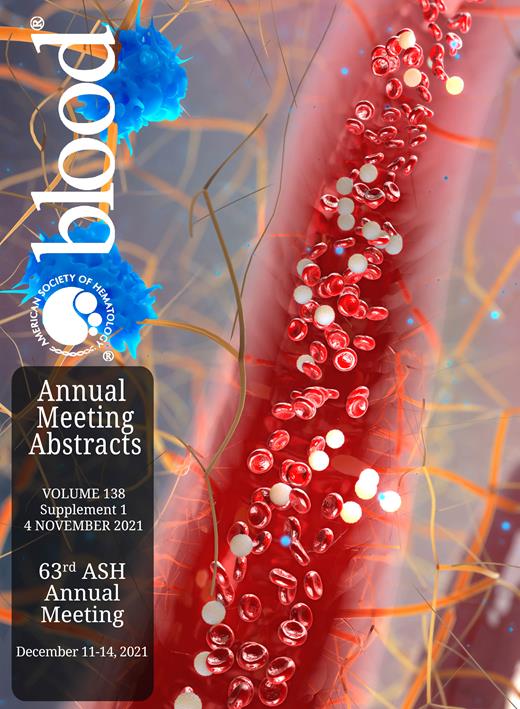Abstract
Introduction: Studies conducted in the pre-rituximab era found EBV positive diffuse large B-cell lymphoma (EBV+ DLBCL) as a disctinct entity carrying a dismal prognosis when compared with EBV negative (EBV-) DLBCL cases. However, studies evaluating this disparity in the rituximab era are lacking. Therefore, we aim to investigate the clinicopathological features and outcomes patterns among EBV+ and EBV- DLBCL managed in the modern era.
Methods: We retrospectively analyzed patients 18 years and older diagnosed with DLBCL between 2006 to 2020. Seven centers from the Grupo de Estudio Latinoamericano de Linfoproliferativos (GELL) participated in the study. Hematopathologists at each participating institution reviewed the pathological samples to confirm the diagnosis of EBV+ or EBV- DLBCL, not otherwise specified (NOS). EBV infection was confirmed with a positive EBER test ≥1%. The primary endpoint was overall survival (OS), defined as the time from the date of diagnosis until death from any cause or last follow up. The secondary endpoint was progression-free survival (PFS) defined as the time from diagnosis until death, progression, or last follow up. OS and PFS probabilities were computed with the Kaplan-Meier method and compared using the log-rank test. We used Cox regression analysis to evaluate the proportional hazard ratios (HRs) of each score for our study outcomes. Outcomes with a p-value <0.05 were considered statistically significant.
Results: A total of 119 patients with EBV+ DLBCL, NOS and 122 patients with EBV- DLBCL, NOS were included in this analysis. The median age at diagnosis was 58 years (range 19-86 years) with an slight female (53%) predominance. Most cases (68%) had advanced stage (III/IV) at diagnosis. EBV+ DLBCL patients had higher-risk clinical features compared with EBV- DBCL: 34% presented ECOG performance status ≥2 (vs 18%, p=0.010), 45% had poor risk R-IPI score (vs 29%, p=0.03), 47% had high and high-intermediate risk NCCN IPI score (vs 40%, p=0.002). Germinal center B-cell was the most common phenotype in both groups (46% each); non-germinal center was more common in EBV+ (44%) than EBV- (34%). All patients received either R-CHOP (95%) or R-EPOCH (5%) as first-line treatment. The overall response rate was 91% for EBV- DLBCL (complete response, CR 81%) compared to 74% for EBV+ DLBCL (CR 65%, p=0.015). With a median follow-up of 60 months, the 5-year OS rates for EBV+ and EBV- DLBCL were 64% and 75% (p=0.062; Fig 1A), respectively; whereas the 5-year PFS rates for EBV+ and EBV- DLBCL were 53% and 68% (p=0.031; Fig 1B), respectively. In the univariate analysis, ECOG ≥2, extranodal involvement >1, elevated serum lactate dehydrogenase (LDH), and serum albumin <3.5 g/dL were statistically significant for OS (Table 1). On the other hand, EBV+ status, ECOG performance status ≥2, extranodal involvement >1, elevated serum LDH, and serum albumin <3.5 g/dL were significant predictors for PFS. In the multivariate analysis, no variable was statistically significant for OS or PFS (Table 1).
Conclusions: In this large cohort of Latin American patients with EBV+ DLBCL, we found poor clinical features in EBV+ compared to EBV-DLBCL cases. Although shorter PFS was found in EBV+ DLBCL cases, in the multivariate analysis we could not identify EBV status as an independent risk factor for worse survival. Our results suggest that in the rituximab era, there has been an improvement on the survival outcomes of EBV+ DLBCL, NOS patients managed with chemoimmunotherapy. We are currently validating our findings in a prospective cohort of DLBCL patients and to improve clinical decision-making in those deemed at high-risk for early mortality and relapse.
Ramirez-Ibarguen: Asofarma: Consultancy; MSD: Consultancy; Abbvie: Speakers Bureau; Astra Zeneca: Speakers Bureau; Janssen: Speakers Bureau; Roche: Speakers Bureau; Takeda: Consultancy, Speakers Bureau. Perini: Janssen: Honoraria, Speakers Bureau; Takeda: Honoraria, Speakers Bureau; Astra Zeneca: Honoraria, Speakers Bureau; MSD: Honoraria, Speakers Bureau. Oliver: Abbvie: Other: conference support and fees ; Roche: Other: conference support and fees . Castillo: Abbvie: Consultancy, Research Funding; BeiGene: Consultancy, Research Funding; Pharmacyclics: Consultancy, Research Funding; Janssen: Consultancy; Roche: Consultancy; TG Therapeutics: Research Funding.


